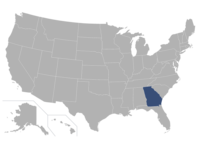High number of rural Georgians call in to new 988 suicide prevention phone line

The mid-July launch of a new three-digit national suicide prevention phone line has driven an increase in call volume in Georgia, with a disproportionate number of callers dialing in from rural counties.
The number of rural Georgians reaching out for help is not too surprising, says Judy Fitzgerald, commissioner of the state Department of Behavioral Health and Developmental Disabilities. Suicide rates in rural Georgia climbed during the pandemic even as overall rates declined, resulting in special efforts to promote 988 to the state’s agricultural communities.
“We already had a preview that something was happening there,” Fitzgerald said in an interview Thursday.
“The second thing, I think it’s a fair concept if stigma is high in a particular area – and we think in rural communities, it is higher; everybody knows everybody. So, if you’ve got a way to dial anonymously, and not be known, maybe that’s a factor in rural settings,” she said.
Nearly two months after 988’s launch, it’s still too early to draw many conclusions from the early call data about what additional resources may be needed to ramp up state services to meet demand, Fitzgerald said. But that could come later this year ahead of the 2023 legislative session, which starts in January.
The state agency is projected to need an additional $283 million annually, as well as about $150 million for one-time construction costs for projects like additional and modernized crisis units around the state.
A spokesman for the governor’s office said Thursday it was also too early in the budgeting process to comment on whether 988-related funding might be included in Gov. Brian Kemp’s new spending proposals.
But Fitzgerald’s agency used the national program’s 45-day mark in late August to provide a public update Thursday on how the rollout is going so far and the trendlines that are starting to emerge.
“We do have early evidence that people we know need help who have been traditionally underserved are finding their way to support through this 988 (program),” Fitzgerald said during an hourlong public webinar.
“But I want to be clear, we are very early in the process here. It’s just the beginning of a long journey towards building capacity and walking alongside our fellow Georgians as we respond to the call for behavioral health crisis services,” she said.
Georgia has had its own crisis call center for 15 years and has seen its call volume rise since the pandemic. But 988 could as much as double the number of calls by next year, although the federal government has delayed plans to promote the program to give states more time to prepare.
About 38,000 calls, texts or chat messages were received in the first 45 days with nearly 28% of them from 988. Of the calls, 476 were from people whose state of distress was considered life-threatening, causing the call-takers to involve 911.
Of the calls that required a service for mental health and substance use crisis, the majority resulted in help being sent to the person or care being provided through a community service board or a hospital. About one-third of the calls were resolved over the phone.
About 10% of calls were either from people under the age 18 or someone calling on the behalf of a young person.
South Georgia accounted for a higher prevalence of crisis calls in the first month, with Webster County residents reaching out for help at twice the rate of those living in Fulton County. Dougherty, Baker, Lowndes and Early were other counties with high rates of crisis calls. Only two counties in Georgia – Echols and Quitman – registered no calls. About 10% of callers declined to provide their location.
There was also a higher rate of male callers.
“Some of that might be because men are less likely to reach out in typical outpatient services and may be more inclined to reach out to an anonymous hotline,” said Dawn Peel, director of DHBDD’s office of crisis coordination.








